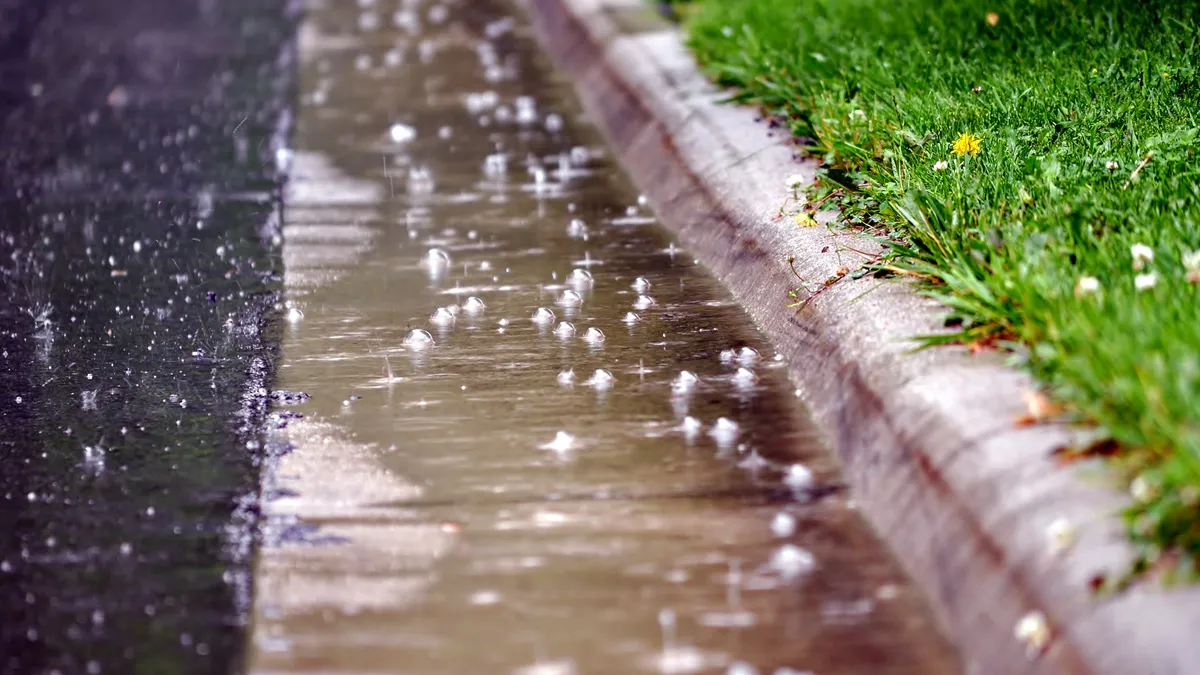Dive Brief:
- Boston announced its first green infrastructure policy requiring certain small-scale, right-of-way city infrastructure projects to include environmental features that improve resilience to the impacts of climate change, such as flooding. The policy specifically applies to curb extensions, or bump-outs, designed to increase pedestrian safety at crosswalks.
- The policy has three elements: five alternative curb bump-out designs that incorporate green infrastructure, two maintenance contracts for upkeep at new green infrastructure installations and a volunteer “adopt a space” program for green infrastructure maintenance.
- Mayor Michelle Wu and other leaders introduced the policy last week during a press conference at Boston’s newly reworked Central Square, one of the city’s first green infrastructure pilot project sites that incorporates elements like porous pavement and an underground stormwater reservoir.
Dive Insight:
Green infrastructure is a water management approach that mimics nature’s water cycles. It incorporates plants and other materials to help stormwater absorb back into the ground and improve water quality through filtration.
Curb bump-outs typically are paved, but Boston’s alternative designs convert the small spaces into water management features. New curb extensions must incorporate at least one of the five named green infrastructure alternatives: bioretention, such as rain gardens; surface infiltration, such as tree pits; porous paving materials; subsurface infiltration, such as underground stone or sand; and one-time seeding for low-grow, evergreen grass or wildflowers.
“Anything that we can do to decentralize the system, absorb water into the ground, improve water quality and slow the velocity of stormwater runoff is really important,” said Danielle Pieranunzi, SITES director at the Green Business Certification Inc. She has assisted cities, including Austin, Texas, with implementing the SITES rating system, which aims to help local governments reduce the environmental impact of land development projects by evaluating and addressing greenhouse gas emissions, fossil fuel use and the potential for carbon capture and sequestration throughout the project’s lifecycle. Austin is the first global city to incorporate the system into local policy and has more SITES projects than anywhere in the world.
Stormwater management is the most common use of green infrastructure, but the practice also bears other community benefits, she said. Green spaces improve residents’ mental and physical well-being by filtering air pollution and providing areas for pollinators and wildlife. Green infrastructure also helps to mitigate heat in urban areas.
“Using more vegetation in our cities and less concrete and other hardscape means there’s more opportunity to reduce the urban heat island effect that we’re getting from the excessive amounts of hardscape,” Pieranunzi said.
Plus, green infrastructure reduces stress on existing “gray infrastructure” — traditional stormwater management elements such as roads, drains, gutters, pipes and dams.
“Using green infrastructure has the benefit of reducing the burden on those systems but also making them last longer,” Pieranunzi said. “All our cities are growing, and more than 50% of the world’s population is in urban areas, so we really need to think about how to make the current infrastructure last longer.”
Boston’s policy supports the idea that small changes can add up and have a notable impact on climate resilience, said Kate England, Boston’s director of green infrastructure, at the press conference. This summer, England became the first person to hold the newly created position. She’s tasked with incorporating green infrastructure into Boston’s plans, operations and regulations while ensuring city departments have a uniform approach to implementation.
England suggested that many people feel dread or helplessness when contemplating climate change, but making small changes to everyday life and activities can help.
“Installing green infrastructure features is a physical, tangible thing that we can do that really makes a difference and makes our cities more resilient,” she said.
The city learned during the community engagement process that residents want to be involved with green infrastructure projects, Wu said. The city will hold training programs for residents and staff who want to help with installation and maintenance. It will also offer certifications for individuals to work on the construction and maintenance aspects of such projects, which furthers the green jobs pipeline in Boston.
“Resilience isn’t just about safety and beauty, but about the economy and jobs of the future as well,” Wu said. “As it becomes increasingly urgent that we build a sustainable future for our kids, for their kids after them, we are committed to creating opportunities for our residents to benefit from this shift to a green economy.”












